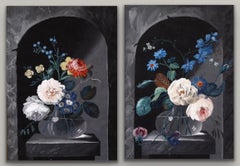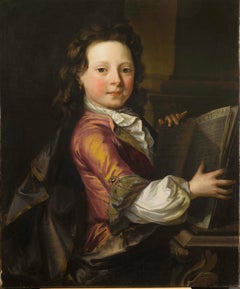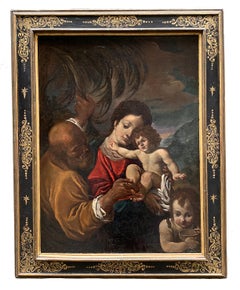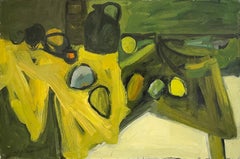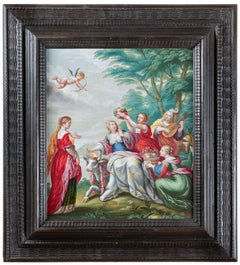18th Century and Earlier Paintings
Dutch School 18th Century and Earlier Paintings
Paper, Watercolor
Baroque 18th Century and Earlier Paintings
Canvas, Oil
Italian School 18th Century and Earlier Paintings
Oil, Canvas
Old Masters 18th Century and Earlier Paintings
Copper
Abstract Geometric 18th Century and Earlier Paintings
Canvas, Oil
Old Masters 18th Century and Earlier Paintings
Oak, Oil, Wood Panel
Baroque 18th Century and Earlier Paintings
Canvas, Oil
Renaissance 18th Century and Earlier Paintings
Wood Panel, Oil
18th Century and Earlier Paintings
Canvas, Oil
Old Masters 18th Century and Earlier Paintings
Ink, Pen
18th Century and Earlier Paintings
Oil, Canvas
Old Masters 18th Century and Earlier Paintings
Canvas, Cotton Canvas, Oil
Old Masters 18th Century and Earlier Paintings
Canvas, Oil, Cotton Canvas
Italian School 18th Century and Earlier Paintings
Canvas, Oil
Old Masters 18th Century and Earlier Paintings
Canvas, Oil
Baroque 18th Century and Earlier Paintings
Oil
Italian School 18th Century and Earlier Paintings
Oil, Canvas
18th Century and Earlier Paintings
Oil
18th Century and Earlier Paintings
Canvas, Oil
18th Century and Earlier Paintings
Watercolor, Etching
Old Masters 18th Century and Earlier Paintings
Oil, Panel
Dutch School 18th Century and Earlier Paintings
Oil, Wood Panel
Old Masters 18th Century and Earlier Paintings
Canvas, Cotton Canvas, Oil
18th Century and Earlier Paintings
Watercolor, Etching
18th Century and Earlier Paintings
Oil
18th Century and Earlier Paintings
Watercolor
18th Century and Earlier Paintings
Watercolor, Etching
18th Century and Earlier Paintings
Oil, Wood Panel
Baroque 18th Century and Earlier Paintings
Canvas
Dutch School 18th Century and Earlier Paintings
Canvas, Oil
Realist 18th Century and Earlier Paintings
Canvas, Oil
18th Century and Earlier Paintings
Watercolor
Other Art Style 18th Century and Earlier Paintings
Oil, Board
Folk Art 18th Century and Earlier Paintings
Oil
18th Century and Earlier Paintings
Watercolor, Etching
Baroque 18th Century and Earlier Paintings
Oil
Academic 18th Century and Earlier Paintings
Oil, Canvas
18th Century and Earlier Paintings
Watercolor, Etching
Other Art Style 18th Century and Earlier Paintings
Oil
18th Century and Earlier Paintings
Canvas, Oil
Flemish School 18th Century and Earlier Paintings
Oil
Other Art Style 18th Century and Earlier Paintings
Oil
Realist 18th Century and Earlier Paintings
Canvas, Oil
Old Masters 18th Century and Earlier Paintings
Oil
Old Masters 18th Century and Earlier Paintings
Oil
Old Masters 18th Century and Earlier Paintings
Oil
18th Century and Earlier Paintings
Canvas, Oil
Old Masters 18th Century and Earlier Paintings
Oil
Realist 18th Century and Earlier Paintings
Copper
Old Masters 18th Century and Earlier Paintings
Oil
Old Masters 18th Century and Earlier Paintings
Canvas, Cotton Canvas, Oil
Old Masters 18th Century and Earlier Paintings
Oak, Oil, Wood Panel
Dutch School 18th Century and Earlier Paintings
Oil
Old Masters 18th Century and Earlier Paintings
Oil
18th Century and Earlier Paintings
Watercolor, Etching
18th Century and Earlier Paintings
Watercolor, Etching
Old Masters 18th Century and Earlier Paintings
Oil Pastel, Canvas
Baroque 18th Century and Earlier Paintings
Canvas, Oil
Old Masters 18th Century and Earlier Paintings
Oil
18th Century and Earlier Paintings
Watercolor, Etching
Read More
The Real World Portraitist of “The Gilded Age,” Season Three
Only the best painter could suit the calculatedly extravagant Bertha Russell.
See Kent Monkman’s Magical Realist Take on Frontier History
With a solo show at the Denver Art Museum and a commission from the Met, the Cree Canadian painter has become an international sensation.
Yale’s Trove of British Art Is Back on View in a Refreshed Louis Kahn Building
After a two-year closure, they Yale Center for British Art opens its doors again, with all sorts of changes to its building and programming.
At 89, Artist Lucio Pozzi Is Reaching New Career Heights
The Italian-American’s 2020 abstract painting “The Hoe” personifies his “art of not knowing.”
The 1stDibs Guide to Types of Abstract Art
Get to know the key movements and artists who have influenced visual culture for more than a century.
With a Show at MoMA, Marlon Mullen Paints Pictures That Are beyond Words
The nonspeaking California artist is having a moment, with vivacious paintings that play on art-magazine covers as well as more mysterious abstractions.
The Vibrant Beauty of Orphist Art Supersedes Its Perplexing Name
This kaleidoscopic early-modern art style has long deserved another look. Now, the Guggenheim museum is doing just that.
The 50 Most Expensive Paintings Ever Sold
Curious about the most expensive paintings in the world? Discover the stories behind these masterpieces as well as the staggering prices they fetched.
